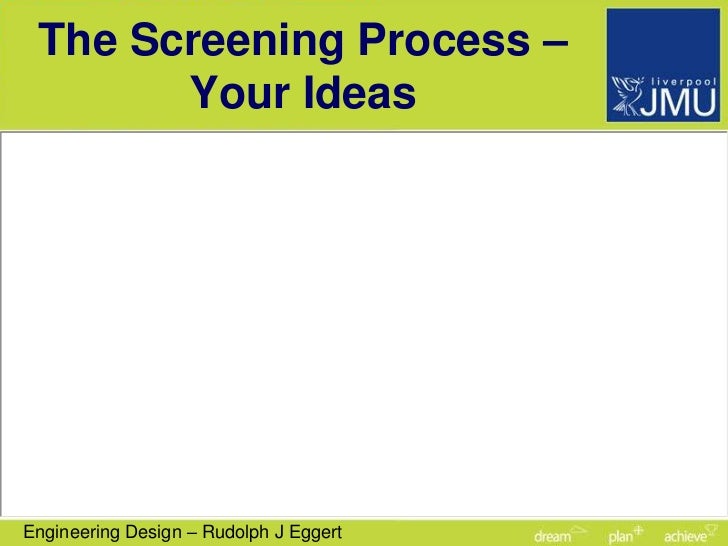

Engineering Design is intended as a text for senior capstone courses as well as junior and sophomore engineering design courses. The text integrates the best concepts and methods presented in other design textbooks, while providing additional topics such as human factors, materials and manufacturing processes. Using a "just-in-time" philosophy of learning, topics are presented in a timely, orderly fashion, progressively building engineering design methods and terminology. Key terms are defined, emphasized, and distinguished to highlight important subtleties. Exercises at the end of each chapter reinforce the knowledge and methods presented. In addition, self-quiz exercises are included at the end of each chapter.
Key Features of the Book- The best design methods and practices, as well as key terminology, are presented in a consistent, clear, and orderly manner. This is the first major text to include a glossary of design and manufacturing terms.
- Includes a chapter on human factors and their relationship to engineering design. Concepts, tabular data, and illustrations provide students and faculty with the necessary tools for preparing preliminary product designs that incorporate human abilities and limitations.
- A chapter on manufacturing processes and their feature generating capabilities introduces readers to manufacturing processes from a product development perspective. The chapter will be especially useful for those institutions that do not have a separate manufacturing processes course in their curriculum.
- A chapter on selecting materials for design introduces readers to appropriate material properties and selection methods, and their influence on the design of a product.
- Significant emphasis is placed on how to formulate a design problem. Readers will learn methods and concepts that will enable them to determine customer and company requirements in qualitative and quantitative terms. The House of Quality is also presented and integrated as an effective contribution to the "design process."
- A variety of product design examples are used throughout the text to highlight similarities, differences, and subtleties of design concepts and methodology.
Engineering design is the set of activities that lead to the manufacture of exciting new products such as aircraft, automobiles, home appliances, and hand tools as well as the construction of new facilities such as refineries, steel mills, and food processing plants. It is a pursuit that challenges our analytical abilities and our knowledge of mathematics, the sciences, and manufacturing to find solutions that work better, last longer, and are easy to maintain or repair. Just as important, however, is that engineering design is fulfilling and personally satisfying in that we can use our creative abilities to develop ideas, that they become real, and that they meet the needs of our fellow human beings.
This text is for students at the undergraduate or first-year graduate level. It is for design and nondesign faculty who wish to learn more about modern design concepts and methods. It is for practicing engineers who wish to enhance their knowledge and skills. The book is not a comprehensive, intellectual report of engineering design research. Rather, the text is a practical, down-to-earth presentation of engineering design integrating topics about the business of manufacturing. It draws upon the author's engineering and managerial experiences at organizations such as General Electric, Fisher Price Toys, Wurlitzer, and the New York State Energy Research and Development Authority. Preliminary versions of the text have been successful in semester-long design courses that include team-based design projects.
This book brings together the best design methods and practices in a consistent, clear, and orderly presentation. Readers are introduced to concepts and methods developed by the best engineering design authors in the world including Dixon and Poli, Dieter, Otto and Wood, Pahl and Beitz, and Ullman. Using a "just-in-time" philosophy of learning, topics are presented in an orderly fashion, progressively building design methods and terminology. The topics are presented and used, rather than stored away for use at a later date. Exercises at the end of each chapter use the knowledge and methods presented. Mary different examples are presented to highlight the similarities and differences of various design methods. An extensive summary of key terms is included in a glossary to delineate the important subtleties that are embodied in design and manufacturing terminology. In addition, self-quiz exercises are included at the end of each chapter for immediate reinforcement of the reader's understanding.
A number of other important features are included. Concurrent engineering and teamwork, particularly the role of communication and project management, is emphasized throughout the text. The interdependence of product function, materials, and manufacturing processes is examined with respect to the product realization process in separate chapters on materials and process selection. The voice of the customer is interwoven in chapters on design problem formulation and includes using customer satisfaction measures to evaluate design alternatives. The subject of human factors is presented along with tables and illustrations in such detail so as to provide the reader with the necessary tools for preparing preliminary designs that incorporate human abilities and limitations. Instructors will find a variety of materials on the accompanying Instructor's CD ROM, including PowerPoint@ slides, solutions to exercises, syllabi suggestions, design project write-ups, and electronic files of key figures from the text. To see current errata or contact the author, please visit http://coen.boisestate.edu/reggert/.
I wish to thank all the practicing engineers, students, and faculty who provided suggestions for the development of this book. In particular, I wish to acknowledge the following colleagues for their helpful review and advice:
Stephen H. Carr-Northwestern University
Tom Grimm-Michigan Tech
Raghu Echempati-Kettering University
John Lamancusa-Penn State
D. C. Anderson-Purdue University
Holly Ault-Worcester Polytechnic Institute
Thomas R. Kurfess-Georgia Tech
Finally, I wish to thank my son Randy and wife Linda for their many hours of editorial assistance and for their unwavering support during the preparation of the manuscript.

-
-